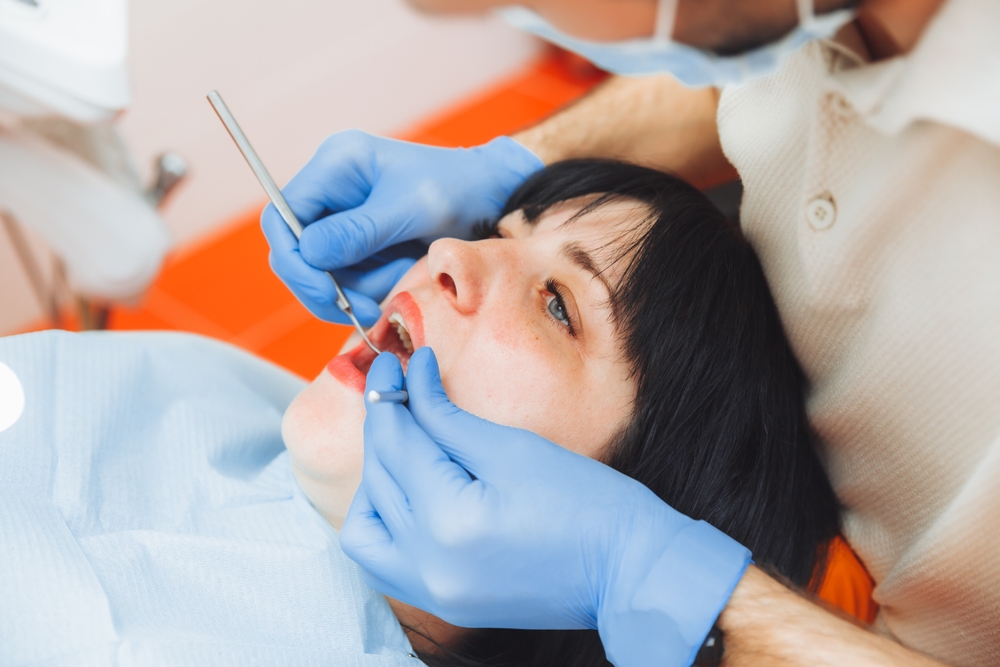Summer Smiles Discount
Save Up to 15% On 1 Treatment Item!
DOWNLOAD COUPONToothpaste ads Norman Rockwell painted in the 1950s featured happy children with big smiles and the slogan “Look, Mom—no cavities!” But while cavities are more common in children and adolescents, tooth decay can affect people of all ages.

Do you know how to tell if you have cavities?
About 92% of adults who have teeth also have tooth decay (dental caries). Slightly more than a quarter (26%) have untreated cavities. Worldwide, dental caries is the most common noncommunicable disease.
At Penn Dental Family Practice (PDFP), we inform children and adult patients how to know if they have a cavity. The following will teach you signs you may have a cavity, how to get a cavity treated if you do, and how to help prevent future ones.
Dental cavities are small holes in your teeth’s enamel (the tooth’s hard, outer layer). Cavities form when bacteria, acid, food particles, and saliva combine to form the sticky film called plaque. Acids in plaque cause cavities.
Plaque begins accumulating on teeth in as short a time as 20 minutes after eating. When not removed by proper brushing and flossing, plaque hardens into tartar (calculus), which only dentists can scrape away.
PDFP patients sometimes ask, “How do I check myself for cavities?”
Sensitivity to hot and cold food and drink may indicate you have a cavity. So may a bad toothache you can’t shake.
You should also be aware of other potential signs of a cavity, including:

Contrary to popular assumptions, cavities don’t always cause pain, especially in early stages. You can’t feel small cavities with your tongue, and cavities aren’t always visible to the naked eye.
To tell if you have cavities, schedule regular visits to your dentist.
Cavities are permanent damage to your enamel. Ignoring them won’t make them go away.
In an untreated cavity, bacteria can migrate from the enamel to the dentin beneath (hard, mineralized tissue), eventually reaching the pulp (the nerves and blood vessels at a tooth’s center). The growing cavity can lead to severe toothache, serious inflection, and tooth loss.
The sooner a cavity is detected and treated, the less likely it is to cause bigger problems.
Dental hygienists and dentists know what cavities look like, and will be alert for them when cleaning and examining your teeth. Since cavities aren’t always visible, your dentist will probe for soft areas which may indicate tooth decay. Dentists also use X-rays to find cavities.
If your dentist discovers you have a cavity, treatment options depend on its severity.

Treating a cavity before the pulp has become infected generally involves a filling, with or without a crown.
Once your dentist removes the tooth’s infected and damaged area, the area is “filled” with porcelain or tooth-colored composite resin.
To prevent further decay and damage, the dentist places a custom-fit crown over the tooth’s entire surface. Crowns can be made of gold or another metal, porcelain, or a combination.
If the pulp is infected, your dentist will likely need to perform a root canal procedure to save the tooth. This treatment involves removing the infected tissues in the pulp and cleaning out the canals to prevent future infection.
If the infection has progressed too far and the tooth can’t be saved, your dentist will extract it to prevent further damage to your oral and overall health. You may then need prosthodontic treatment to preserve your bite’s integrity and restore your smile.
The American Dental Association recommends brushing your teeth twice a day—for two minutes each time, with fluoride toothpaste—and cleaning between teeth with floss or another safe interdental cleaner at least once a day.
Eating a diet low in sugary, sweet foods and drinks also promotes healthy teeth. These foods support good oral health:
Milk, yogurt, and cheese contain calcium and phosphates that help rebuild and reinforce tooth enamel.
Many fruits and vegetables are packed with fiber that promotes saliva production and combats enamel-damaging acids. Good choices include raspberries, unpeeled apples, pears, bananas, green peas, broccoli, brussels sprouts, and turnip greens.
Several toothpastes include fluoride. Many commercially prepared foods also naturally contain this mineral. Fluoride-rich foods can include poultry, seafood, powdered cereals, and dehydrated soups. Also, drinking more fluoridated water, “the best beverage for maintaining your oral health,” opposed to sugary cola will help promote good oral hygiene.
Even if you’re too old to be one of the children in those old toothpaste ads, getting a clean bill of health from a dentist feels great.
If you are in or near Philadelphia wondering how to tell if you have cavities, or how to deal with other concerns about your teeth and mouth, download a free comparison chart to find out how Penn Dental Family Practice can help.
PDFP dentists use the latest research, techniques, and materials to maximize patients’ oral health. We put patients at ease and resolve dental problems with as little pain and stress as possible.
Each of our two convenient locations brings the full range of dental services under the same roof. It’s easy to get both regular dental treatments and emergency services in a timely, affordable way.
Download your comparison chart today, or make an appointment by scheduling online or calling 215-898-PDFP (7337).
Get Your Appointment Now
We look forward to serving you and your family.